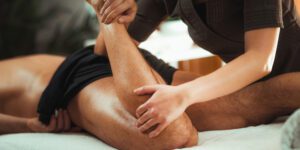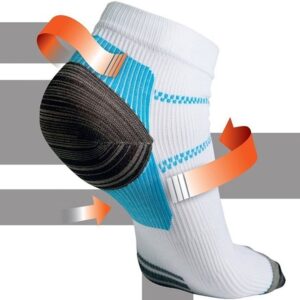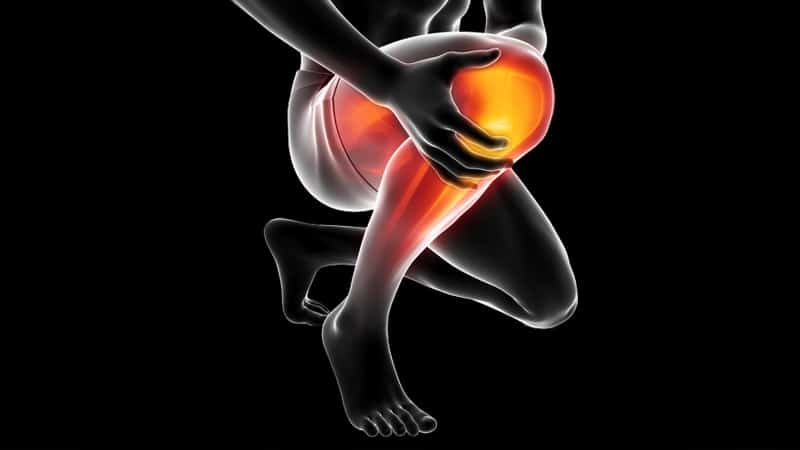Hammertoe and mallet toe are foot abnormalities that result from a muscular, tendon, or ligament imbalance that keeps the toe straight. Shoes, limb structure, trauma, as well as various disease processes can all play a role in their formation.
It is important for those afflicted with hammertoe and other similar conditions to take steps as soon as possible so they will not worsen and become more difficult to correct later on. A hammertoe is a toe deformity in which the center joint bends abnormally. The joint nearest to the toenail is affected by mallet toe. Hammertoe and mallet toe are most frequently seen in your second, third, and fourth toes.
A variety of treatments are available for hammertoe and mallet toe. Changing your shoes and wearing shoe inserts might help relieve the pain and pressure caused by hammertoe and mallet toe. If you have a more severe form of hammertoes or mallet toes, surgery may be required to get relief.
Symptoms
Hammertoe and mallet toe are caused by a bent joint in one or more of your toes. It might be difficult or unpleasant to move the afflicted toe. Corns and calluses can develop as a result of the little toe rubbing against the inside of your footwear.
Signs and symptoms include:
- A downward bent toe
- Corns and calluses
- Toes that look like claws
- Pain when walking
- Inability to wiggle your toes
- Difficulty to flex your foot
Note: If you develop any of those symptoms it is essential to see your orthopedic surgeon or podiatrist as fast as possible!
Causes
The toe of your foot has two joints that allow it to bend in the middle and bottom. A hammertoe occurs when the middle joint becomes flexed or bent downward. Symptoms of hammertoe and mallet toe usually develop because of these common causes:
- Wearing the wrong shoes. High-heeled shoes, for example, can wedge your toes into a cramped space where they won’t be able to lie flat. Even when you’re not wearing any shoes, this curled toe posture might linger.
- Trauma after an injury. It’s more likely that a toe becomes a hammertoe or mallet toe if you injure it by stubbing, jamming, or breaking a toe.
- Arthritis. Hammertoes and mallet toes are both common in people with arthritis because the stiffness of the condition can make it difficult to find comfortable footwear.
- High foot arch. Sometimes, a high arch can lead to hammertoe and mallet toe. This is because in the process of forming the foot, the middle joint might be squeezed too tightly.
- Tight ligaments or tendons. If your ligaments or tendons are too tight, they can pull on the toe bones and cause hammertoes and mallet toes.
- Imbalance of toe muscles. Your foot has many muscles to keep the toes in the correct position. If these muscles are not in balance, a toe might remain too bent even when you’re trying to straighten it.
- Pressure from a bunion. If you have a bunion on your foot, this can bump against your second toe and cause it to become a hammertoe.
- Injury or deformity. A fracture in the joint of one of your toes might cause it to stay bent even when not injured. Some people are born with an abnormally straight great toe, resulting in a hammertoe deformity as part of their natural structure.
Risk Factors
The following factors raise your risk of developing a hammertoe or mallet toe:
- Age. The older you get, the more the risk of getting hammertoe or mallet toe
- Gender. Hammertoe or mallet toe develop much more likely in women
- Length of your toes. Hammertoe or mallet toe are more probable if your second toe is longer than your big toe.
- A family history. If you have a parent or sibling who developed hammertoe or mallet toe as they aged, this puts you at greater risk of developing these conditions as well.
- Wearing tight shoes. If you typically wear high-heeled shoes, athletic shoes that are too tight or other types of tight footwear, this increases the risk of hammertoe and mallet toe.
- Having corns and calluses. If you have a thick callus or corn on one of your toes, this can put pressure on that toe and cause it to become bent.
- Having an abnormal foot structure. A high arch can lead to hammertoe and mallet toe because in the process of forming the foot, the middle joint might be squeezed too tightly.
- Bunions. If you have a bunion on your foot, this can bump against your second toe and cause it to become a hammertoe.
- Certain health conditions. Arthritis and diabetes can make you more likely to acquire foot abnormalities. Heredity may also be a factor.
A hammertoe or mallet toe may be flexible for a time. However, as the tendons of the toe tighten and contract, your toe may become permanently bent. Your shoes can irritate the swollen portion of your toe or toes, resulting in corns and calluses.
Diagnosis
Your medical professional may examine your foot to determine whether you have hammertoe or mallet toe. X-rays could be taken to further examine the bones and joints in your feet and toes.
Treatment
If your toe is still flexible, you may treat a hammertoe caused by ill-fitting shoes by wearing well-fitting shoes. If a high arch was to blame, add toe pads or insoles to your footwear. These pads shift the position of your toe, reducing discomfort and improving the appearance of your toe.
Bunions and corns can usually be treated with over-the-counter (OTC) cushions, pads, or medicines. However, if they are unpleasant or cause your toes to twist strangely, your doctor may recommend that you have them surgically removed.
Your podiatrist could also suggest toe exercises, such as picking up marbles or crumpling a towel with your toes, to stretch and strengthen your toe muscles.
If you can’t bend your big toe, surgery is your only choice for getting it back to normal. The surgical procedure may include moving the toe, removing misshapen or injured bone, and realigning tendons and joints. Surgeries are generally completed as an outpatient procedure, so you may go home on the day of your operation.
Prevention
Wearing properly fitting shoes is the greatest hammertoe prevention tip. If your shoes are too tight, visit a local shoe store and have your feet measured for length and width.
If you wear high heels, the heel should be no more than 2 inches off the ground. Wearing high-heeled shoes puts additional pressure on your toes and causes them to bow. It can also induce corns and a high arch.
Over-the-counter corn-removal products, particularly ones that include acid in the ingredient list, can be harmful. It’s also dangerous to try shaving or trimming unsightly corn off your toe. Foot injuries may quickly become infected, and foot infections are frequently difficult to cure, especially if you have diabetes or poor circulation.
Takeaways
It is quite common for a hammertoe to go away on its own after being addressed. However, if you wait too long to address the problem, your surrounding toes will be deformed as a result of the hammertoe forcing them out of place. It’s ideal to get treatment as soon as possible once the diagnosis is confirmed.
I hope reading this article answered some of your questions. This article is part of our foot pain series. If you are interested in reading about other foot disorders and conditions please check out all of our articles on our blog here.
Please feel free to comment below with questions, updates or your personal story.























